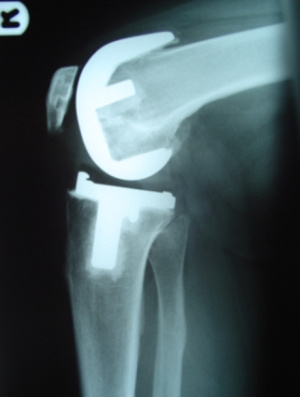
Prepare assistive devices such as a long handle shoehorn. A grabbing tool or reacher so you won’t need to bend too far.
You will need to gradually develop your quadriceps muscle strength (which most likely have weakened from lack of activity due to knee pain before the surgery).
You may lose your appetite and feel nauseated or constipated for a couple of days. This is normal. You may be fitted with a urinary catheter during surgery to ease your post-operative care. The urinary catheter will usually be removed the next day. By then we expect the patient to be ambulating with a walker initially.
Your doctor will give you specific instructions on wound care, pain control, diet and exercise.
Pain management is important in your early recovery. Everyone’s tolerance to pain is different. Some will require an intravenous connection to regulate the amount of medication they need. No need to worry about being dependent on these medications as they will generally be stopped in a day or two.
Generally, we expect the following parameters before we consider discharging a patient:
Patient should be able to get in and out of bed independently
Patient should be able to bend the knee up to 90 degrees
Patient should be able to straighten the knee fully.
Patient should be able to walk on a level surface with crutches or walker.
Mild swelling is expected in the post-operative lower extremities for about 3 – 6 months. Elevate the legs often.
Sutures will be removed 7 to 10 days after surgery.
Notify the doctor if your wound becomes red or begins to drain.
Calf pain, shortness of breath or chest pain are signs of a possible blood clot.
Notify your doctor if you have these symptoms.
Try to achieve maximum range of motion of the knee. You can consider riding a stationary bicycle.
You can drive in a week or so if your left knee alone was replaced.
Avoid driving for 6 to 8 weeks if your right knee was replaced.
In both cases, we are assuming automatic transmission cars.
Sexual relations can be safely resumed in about 4 to 6 weeks after surgery.
Depending on the type of activities performed at work, it may take 6 to 8 weeks before the patient is able to go back to work.
Encouraged activities: walk as much as you like, but increase the distance gradually.
Swimming is recommended 6 to 8 weeks after surgery. Stationary biking is also recommended.
Acceptable activities: Golf (with spikeless shoes and a cart) , dancing and bicycling on level surfaces.
Avoid the following activities: tennis, badminton, contact sports, squash, racquetball, jumping, squats, skiing or jogging.
Do not do any heavy lifting (more than 40 pounds).



